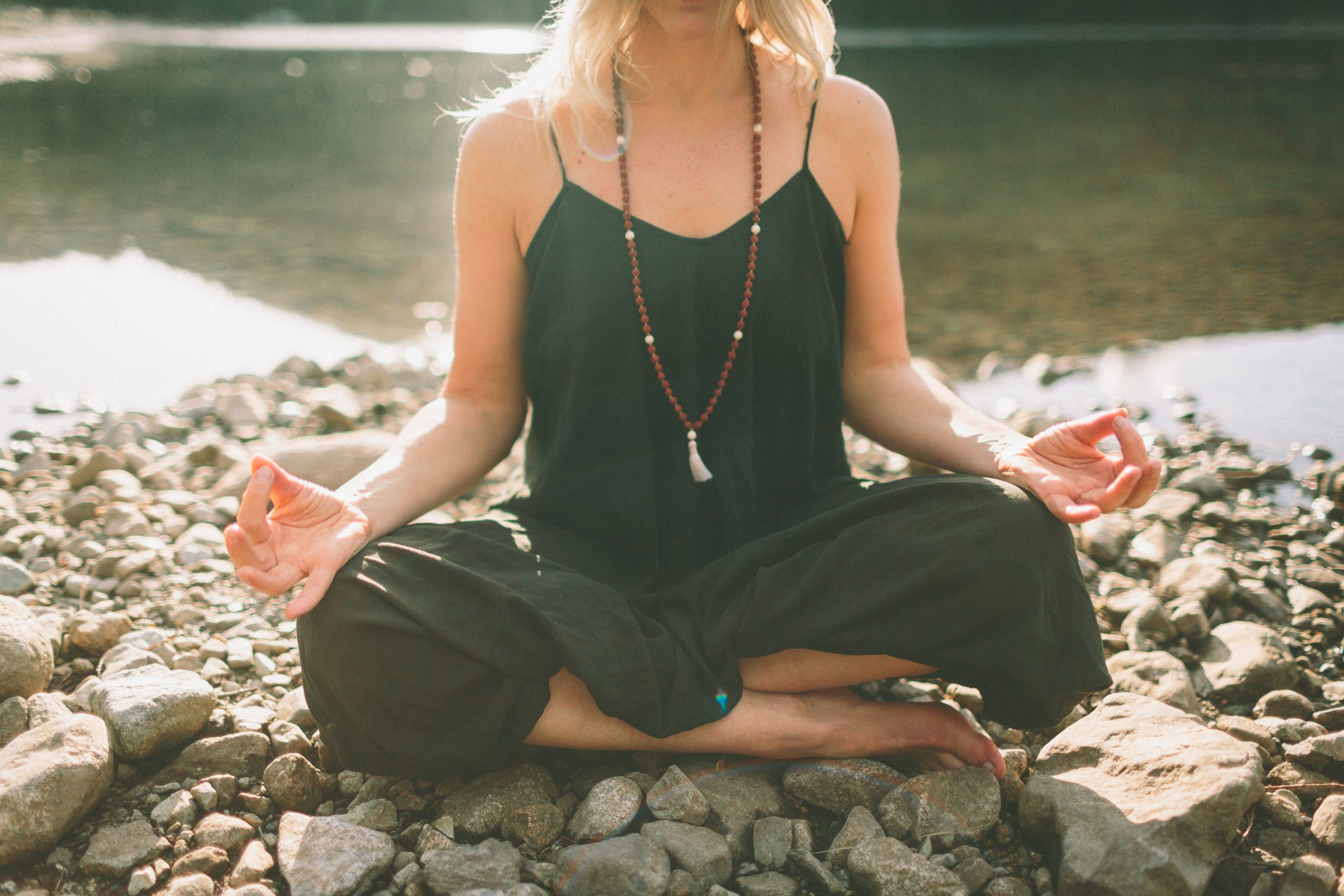Mindfulness meditation is a powerful tool for reducing stress, improving mental clarity, and cultivating a greater sense of peace and well-being. And the best part? Anyone can do it, regardless of age, fitness level, or prior experience with meditation.
In this article, we’ll explore some simple mindfulness meditation techniques that are perfect for beginners. Whether you’re looking to reduce stress, improve your focus, or simply cultivate a greater sense of calm and clarity in your daily life, these techniques can help you get started on your mindfulness journey.
What is Mindfulness Meditation?
Mindfulness meditation is a type of meditation that focuses on being present in the moment and being aware of one’s thoughts and feelings without judgment. It’s a practice that involves intentionally paying attention to the present moment through various techniques such as focusing on the breath or body sensations.
The goal of mindfulness meditation is to cultivate a sense of calmness and awareness that extends beyond just the meditation practice itself. Regular practice of mindfulness meditation can help individuals become more attuned to their thoughts and emotions, allowing them to better manage stress and anxiety in their everyday lives.
One of the key aspects of mindfulness meditation is the practice of non-judgmental awareness. Rather than trying to change or control our thoughts and feelings, we simply observe them without judgment or attachment. This can lead to a greater sense of emotional regulation and resilience.
Mindfulness meditation can be practiced in different ways, including through formal practice such as sitting meditation or walking meditation, or through informal practice such as mindful breathing or mindful eating. It can be done alone or with the guidance of a mindfulness teacher or meditation app.
Some of the potential benefits of mindfulness meditation include decreased stress levels, improved mental health and emotional regulation, lower blood pressure, and improved overall quality of life. With consistent practice, mindfulness meditation can become a valuable tool for managing the ups and downs of everyday life.
Benefits of Mindfulness Meditation
As a beginner, you may wonder what benefits you can expect to gain from mindfulness meditation. The practice of mindfulness has been shown to have numerous mental and physical health benefits that can improve your overall quality of life.
- Reduces stress levels by decreasing cortisol hormone production
- Lowers blood pressure, which is closely tied to stress
- Increases positive emotions like happiness and contentment
- Reduces negative emotions such as anxiety and depression
- Enhances focus, attention, and cognitive functioning
- Improves brain activity in areas related to attention and self-control
- Initiates the relaxation response, promoting calmness and relaxation
- Reduces bodily sensations associated with stress, such as muscle tension and headaches
- Improves overall physical health through the practice of mindfulness meditation
Preparing for your First Mindfulness Meditation Session
If you’ve decided to try mindfulness meditation for the first time, it’s important to ensure that you’re fully prepared for your session to get the most out of it. To begin with, you’ll need to find a quiet and comfortable space where you can practice your meditation. It’s important that you choose a space where you won’t be disturbed, and where you can fully focus on your practice.
Once you’ve found the right space, it’s time to set aside a designated time for your meditation session. This could be first thing in the morning, during your lunch break, or before you go to bed at night. Whatever time you choose, make sure it’s a time that works for you and won’t be disrupted by other commitments.
When it comes to posture, it’s important to choose a suitable position that you can maintain comfortably for the duration of your meditation session. You might want to sit in a chair or on the floor with your legs crossed and your back straight. It’s important that you’re able to maintain good spinal alignment without slouching or straining.
To support your posture, you might also want to consider using props like a cushion or blanket. These can help to support your hips and spine and increase your comfort during your meditation practice.
Finally, it’s a good idea to establish a consistent routine for your meditation practice. This will help you to build the habit and incorporate meditation into your daily life. It’s also important to set an intention for your meditation session and approach the practice with an open and curious mindset. Remember, the more you practice mindfulness meditation, the easier it becomes to integrate it into your everyday life.
Basic Mindfulness Meditation Techniques for Beginners
If you’re a beginner looking to begin practicing meditation, the first thing you should do is find a quiet and comfortable space where you won’t be interrupted. This could be a designated room in your house or even a quiet outdoor location. Once you’ve found your space, it’s time to start your practice with the basics.
One of the most foundational mindfulness meditation techniques is mindful breathing. With this technique, you simply focus your attention on your breath as it moves in and out of your body. This is a great way to begin bringing your attention to the present moment and calming your mind.
To start, sit or stand comfortably with your feet flat on the ground and your back straight. Begin to breathe naturally and notice the sensation of the breath moving through your nostrils, down your throat, and into your lungs. If your mind begins to wander, simply bring your attention back to your breath.
Another technique that beginners can use is body scan meditation. This involves focusing on physical sensations throughout the body, starting from the feet and moving upward. To start, find a comfortable position either sitting or lying down. Close your eyes and bring your awareness to the sensation of your feet touching the ground. Then, slowly move your attention upward, noticing any sensations you feel in your legs, hips, back, arms, and head.
Walking meditation is another technique that can be incorporated into your practice. This form of meditation involves walking slowly and mindfully, paying attention to the sensations in your body as well as the sights and sounds around you. You can do this indoors or outdoors, but it’s important to choose a quiet space where you won’t be disturbed.
Concentration meditations are another effective technique that beginner meditators can incorporate into their practice. These meditations involve focusing your attention on a single point, such as a specific sound or your breath. This can help to train your mind to focus and reduce mental distractions.
Incorporating these basic mindfulness meditation techniques into your regular practice can help to improve your overall well-being and reduce stress levels. Remember, the key is to start with a few simple practices and gradually build as you become more comfortable with your practice.
Different Types of Meditations to Practice
Meditation is a practice that can have a positive impact on both our mental and physical health. There are different types of meditations that beginners can practice, each with its own unique benefits. By exploring different types of meditation, beginners can find the one that best suits their personality and lifestyle. Here are some of the most common types of meditation practices that beginners can try out:
1. Concentration Meditations: These meditations involve focusing your attention on a single point, such as your breath or a specific sound. The goal of this type of meditation is to train your mind to focus and reduce mental distractions. With regular practice, concentration meditations can help increase your ability to focus on tasks, improve your memory, and boost your productivity.
2. Mantra Meditation: In this meditation, you repeat a word or phrase to help quiet your mind. The repetitive nature of the mantra allows your mind to let go of any racing thoughts and become more focused. Mantra meditation is particularly beneficial for those who experience anxiety or stress-related thoughts.
3. Body Scan Meditation: This meditation involves directing your attention to various parts of your body, starting from your toes and moving upward. The goal is to become more aware of how each part of your body feels and to release any tension that you may be holding. This practice can help increase body awareness, relaxation, and may even lead to better sleep.
4. Walking Meditation: This form of meditation encourages the practice of focusing on the physical act of walking to eliminate outside distractions. Walking meditation can be done outdoors or indoors, and it is particularly helpful for those who find it difficult to sit still. This practice can help boost mental functioning, soothing your mind and making you feel more present.
5. Mindful Meditation: This type of meditation involves being present and non-judgmental about your thoughts and physical sensations. It can also involve simply observing your surroundings without judgment. Mindful meditation can lead to a greater sense of awareness, emotional regulation, and reduced stress.

Conclusion
In conclusion, mindfulness meditation is a powerful tool that can help you reduce stress, improve focus, and cultivate a sense of inner peace. While it may seem daunting at first, with practice and patience, anyone can learn to meditate. By incorporating the techniques we’ve discussed, such as focusing on your breath, practicing body scan meditations, and using guided meditations, you can begin to develop a daily mindfulness meditation practice. Remember to be kind and patient with yourself, and don’t get discouraged if you find your mind wandering during meditation. The key is to simply observe your thoughts without judgment and gently guide your attention back to your breath. With consistent practice, you’ll start to notice the benefits of mindfulness meditation in your daily life.

